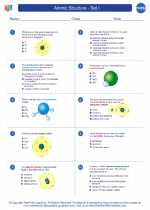Genus in Biology
In biological classification, the genus is a rank used in the classification of living organisms. It is one of the levels in the hierarchy of biological classification that groups species that are closely related. The genus is used as part of the scientific name of an organism and is always italicized or underlined.
Characteristics of a Genus
A genus is characterized by having a group of species that share common characteristics and have descended from a common ancestor. Members of the same genus have more similarities with each other than with members of other genera. The genus is part of a hierarchical system of classification, with the genus being placed above the species and below the family.
Naming Conventions
The scientific name of an organism consists of two parts: the genus name and the species name. For example, in the scientific name Homo sapiens, Homo is the genus name and sapiens is the species name. The genus name is always capitalized and italicized or underlined, while the species name is in lowercase and italicized or underlined.
Study Guide for Genus
- Understand the concept of biological classification and the hierarchical levels of organization.
- Learn to distinguish between a genus and a species.
- Explore examples of different genera and their related species in various taxonomic groups (e.g., animals, plants, fungi).
- Practice writing and formatting scientific names using the proper conventions for genus and species names.
- Study the evolutionary and genetic relationships between species within the same genus.
Understanding the concept of genus is fundamental in the study of biology and is essential for accurately identifying and classifying different organisms.
.◂Chemistry Worksheets and Study Guides High School. Atomic Structure - Set I

 Worksheet/Answer key
Worksheet/Answer key
 Worksheet/Answer key
Worksheet/Answer key
